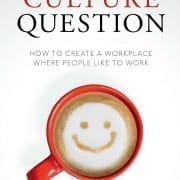eCommerce Warehousing: Top 5 Best Practices
Effective eCommerce warehousing is essential for improving productivity, increasing revenues, and reducing costs.
One way to achieve this is by implementing the best practices recommended for your industry. Multiple practices can help improve warehouse operations, but not all will have the same dramatic effect as others.
The top best practices will likely not be groundbreaking, but when implemented properly, they can be life-changing to your business.
Below are the top five eCommerce warehousing best practices:
1. Automation
The days of performing repetitive and mundane tasks are long gone.
Automated data gathering is an essential component of streamlining warehouse processes, from picking to shipping. Most warehousing operations get severely bogged down by complicated manual processes.
Enhance the efficiency of your warehouse by automating tasks like label generation, packaging, and scanning. Automation helps speed up processes, track data, and avoid the potential for human errors.
2. Employee Incentives
Warehousing is not for the faint-hearted.
Your employees work hard, especially during seasonal promotions, and want to feel appreciated and recognized for their hard work. Praise is an excellent motivator, but incentives work better.
Boosting employee incentives in your workplace will increase productivity, boost morale, and help you attract the best in the business. Incentives do not always have to be fiscal – if you operate in a hot climate, installing air-conditioning will work wonders for your employees.
3. Logistics
Third-party logistics (3PL) providers are an essential part of the supply chain.
They provide valuable support to companies needing assistance getting their products to market and gaining a competitive advantage. Several factors contribute to being a good third-party logistics provider.
A reputable company like Cart.com 3PL logistics services can help advise you on what processes and procedures you should implement in your business.
Not all 3PLs handle every aspect of the supply chain; some specialize in specific areas, such as transportation. The best 3PL providers offer their customers comprehensive and integrated supply chain management solutions.
4. Returns Policy
As with all businesses selling goods, there will always be returns.
That is why one of the most crucial best practices for eCommerce warehouses is having an established and documented returns handling procedure.
The ideal procedure will include a reverse logistics system and inspection and processing procedures for the returned items.
To handle returns effectively, you need to implement certain best practices. If you do not do this, your returns handling process can be costly and time-consuming.
5. Set KPIs
A KPI, or key performance indicator, is a measurable goal in a business setting.
KPIs work for individual employees and help to create overarching goals that everyone within the organization can strive to achieve.
Set KPIs for every sector of your warehouse. Some examples of these can include decreasing shipment times for outgoing orders, decreasing offloading times for new deliveries, and cleaning each department.
Those examples are simple, but you must set and track KPIs to ensure your business is on track to achieve its goals and outcomes.
In Conclusion
Hopefully, these tips will serve as a quick reference guide for your warehouse management.
Warehouses that implement these five best practices are safer, have equipment that lasts longer, and have happier employees.














Leave a Reply
Want to join the discussion?Feel free to contribute!